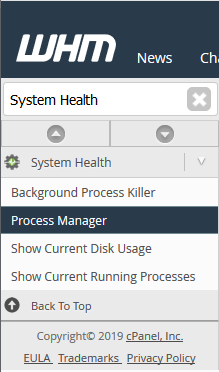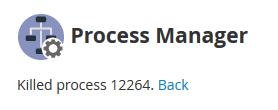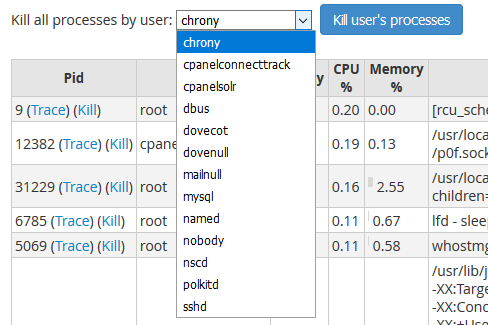-
cPanel
-
- Mailing Lists
- Default Address
- Autoresponders
- Forwarders
- Email Accounts
- Spam Filters
- Track Delivery
- Global Email Filters
- Email Filters
- Address Importer
- Encryption
- Email Disk Usage
- Calendar Delegation
- BoxTrapper
- Configure Greylisting
- Email Routing
- Filter Incoming Emails by Domain
- Email Deliverability
- Authentication (SPF and DKIM)
- Show Remaining Articles ( 4 ) Collapse Articles
-
-
WHM
-
- SSH Password Authorization Tweak
- Apache mod_userdir Tweak
- SMTP Restrictions
- Compiler Access
- Configure Security Policies
- Password Strength Configuration
- cPHulk Brute Force Protection
- Security Questions
- Manage External Authentications
- Two-Factor Authentication
- ModSecurity™ Vendors
- ModSecurity Configuration
- Manage root’s SSH Keys
- Manage Wheel Group Users
- Host Access Control
-
- Terminate Accounts
- Quota Modification
- Modify an Account
- Change Site’s IP Address
- Create a New Account
- Manage Account Suspension
- Upgrade/Downgrade an Account
- Limit Bandwidth Usage
- Force Password Change
- Email All Users
- Reset Account Bandwidth Limit
- Password Modification
- Skeleton Directory
- Rearrange an Account
- Raw Apache Log Download
- Modify/Upgrade Multiple Accounts
- Web Template Editor
- Unsuspend Bandwidth Exceeders
- Show Remaining Articles ( 3 ) Collapse Articles
-
- Articles coming soon
-
- Articles coming soon
Process Manager
Step 1: log in to yourWHM >>System Health >>Process Manager
Step 2: In the Upper Left, there will be a search box. Enter in “System Health_”and hit enter. From the list of available options, select _Process Manager.


Step 3: After you click on Process Manager, you will be brought to a new page that will list the processes running on the server and brief information about them.


Overview of a Process
Each process will have some information regarding the process. This includes the Process ID (Pid), Owner of the process running, Priority of the task, CPU being used by the Process, Memory being used by the Process, and the Command that is running for the Process.


Performing A Trace of the Process
With the WHM Process Manager, you can see the output of a process or task as it runs. This can help debug an issue or see what a process is producing output out of curiosity. To perform a Trace on a process, click on the Trace link next to the process. This will produce output from the process, starting from the point you started to trace the process.


Killing A Single Process
If you notice a script or process running that seems to be bogging down your server, and you are sure that it can be killed, WHM offers the ability to kill the process easily. To do this, you would click the Kill link next to the process in the Process Manager that you would like killed. Afterward, this will redirect you to a page indicating the Kill was successful.


Killing A User’s Processes
If you see that a particular user is abusing the resources or causing a high load on the server due to all of their processes consuming many resources, you can Kill all of the processes that belong to that user.
Step 1: From the top of the Process Manager page, there will be a drop-down list of users. Select the User that you would like to kill processes for in the list.


Step 2: Once you have selected the user you want to Kill processes for, click the Blue Kill user’s processes button.
Step 3 After WHM has killed all of the processes belonging to the user, you will be brought to a page that is similar to if a single process was killed, indicating the user’s processes have been killed.
